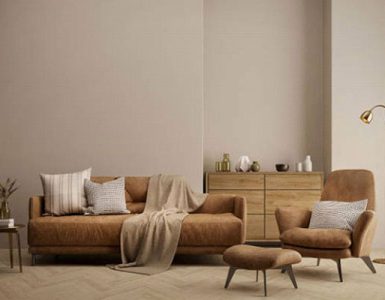Canva is one of the most popular design tools today. It’s user-friendly and has a wide range of templates and design elements that allow you to create beautiful designs without any prior design experience.
Canva Users can design presentations, posters, flyers, social media graphics, and a variety of other visual material. Various templates, images, and drawings are included, along with a straightforward drag-and-drop user interface, a number of design tools, and customization choices. Anyone can make designs that look professional using Canva, regardless of previous design experience. For people, companies, and organisations that have initiatives, campaigns, or branding that require visual material, this is the perfect tool.
Take Advantage of Canva’s Free Templates

Canva’s wide selection of free templates is one of its finest features, having template for everything, including social media posts, presentations, flyers, and resumes. You can alter the hues, fonts, and images in the templates to suit your requirements.
For creating designs with a professional appearance for a variety of reasons, such as social media posts, presentations, flyers, and more, Canva provides a huge selection of free templates. Since these designs are modifiable, you can personalise them by including your own pictures, text, and other design components. You can save time and effort by using Canva’s free designs rather than creating them from inception. Additionally, the skilled graphic designers who made these designs will be available to share their design expertise with you. Make eye-catching designs using Canva’s free templates to help you stand out in a crowded digital environment.
Use Custom Dimensions for Your Designs

Canva offers a broad selection of standard sizes for various design types, including social media posts, posters, and business cards. You can create a custom size if, however, the size you require is not offered by the preset choices.
Select “Custom dimensions” from the menu that appears below the preset sizes to make a custom size. In pixels or inches, enter the design’s breadth and height. You can also decide if you want your image to be in portrait or landscape orientation.
When creating print-ready materials or when your design requires a particular size, custom dimensions can be helpful. It is helpful when creating social media posts that have a particular aspect ratio as well.
Use the Magic Resize Tool

Magic Resize is one of Canva’s less-used features. Your artwork can be simply resized with a single click to fit different sizes and dimensions. This function comes in particularly handy when you need to produce numerous variations of a design for various platforms, like social media.
Click the “Resize” button in the editor’s top-left corner to pick the Magic Resize tool. Determine the scaled measurements and sizes for your artwork. After that, Canva will adjust the image’s scale automatically to fit the selected parameters.
It’s important to remember that with intricate patterns, the Magic Resize tool might not perform as well. It works best with straightforward graphics like social media posts and banners.
Use Keyboard Shortcuts

Time-saving and time-saving keyboard shortcuts are a great method to speed up your designing process. You can use Canva’s variety of keyboard shortcuts to complete frequent tasks swiftly.
You can copy and paste components in your design by pressing the keyboard shortcuts “Ctrl + C” and “Ctrl + V,” for instance. Ctrl + Z will reverse your most recent move, while Ctrl + Y will make it right. A design feature can be duplicated by pressing “Ctrl + D.”
Although learning Canva’s computer shortcuts may take some practice, they will ultimately save you a lot of time.
Change the Color of Elements

Changing an element’s colour is among the simplest methods to make changes to your design. You can also enter precise colour codes in Canva if you have a particular shade in mind. It has many different hues to choose from.
Choose the element of your design whose hue you want to modify. There is a “Color” option on the editor’s left side. Next, select. From the provided palette, pick your favourite hue. Click “+” to enter a specific colour code if the shade you’re searching for isn’t listed.
To make a design more cohesive and consistent with your brand or message, various components’ colours can be changed.
Use Grids and Rulers for Alignment

Alignment is crucial in design. It helps create a professional-looking design and ensures that elements are placed correctly. Canva has grids and rulers that can help you align elements easily.
Ensure that everything you create, including graphics and webpages, is straight. It is acceptable to use compasses and grids in this situation. Giving your design a structure with grids will ensure that all of your components are equally spaced and sized. The grid can be altered to meet your requirements, and you can use it as a guide to position your components. On the other hand, you can precisely measure and check the placement of your design components using a ruler. For alignment, grids and compasses can be used to produce clean, polished designs that are both visually pleasing and understandable.
Use Canva’s Image Editor

You can edit your images without exiting Canva’s editor thanks to its built-in image editor. Cropping, resizing, and applying filters are just a few of the features available in the picture editor.
Select a design picture to bring up the image editor. The “Edit image” button is found at the top of the editor. Click it. You can then make the required changes in the image editor once it has opened.
You can save time by using Canva’s image editor, which also guarantees that your images are modified to suit your design.
Use Canva’s Mobile App

You can create on the go with the help of the Canva mobile app. Templates, custom dimensions, and design elements are just a few of the features that the app shares with the desktop edition.
When you need to make last-minute changes or plan something while you’re on the go, the mobile app is especially practical. Furthermore, it’s helpful when working with team members who might not have access to a laptop computer.
Collaborate with Others

Canva makes it simple to collaborate with others and work on design projects in real time with co-workers or customers. Each team member can add to and make changes to the design at the same time when working on a design project with other team members. This feature is especially helpful for projects like branding guidelines or marketing materials that call for feedback from numerous stakeholders. Canva’s collaboration tools also allow you to track changes made by each team member and remark on specific design components, ensuring accountability and transparency throughout the design process.
Collaborating with others is useful when working on a project with multiple team members or when you need feedback on your design. It also ensures that everyone is working on the same version of the design.
Use Canva’s Brand Kit

Canva’s Brand Kit allows you to save your brand colors, fonts, and logos in one place. You can then access them easily when creating new designs.
Using the Brand Kit ensures that all your designs are consistent with your brand image. It also saves you time when creating new designs as you don’t need to input your brand elements every time.
In conclusion, Canva is a powerful design tool that can help you create beautiful designs without any prior design experience. By using these ten must-know tips and tricks, you can streamline your designing process, save time, and create professional-looking designs that align with your brand image and message.




















Add comment